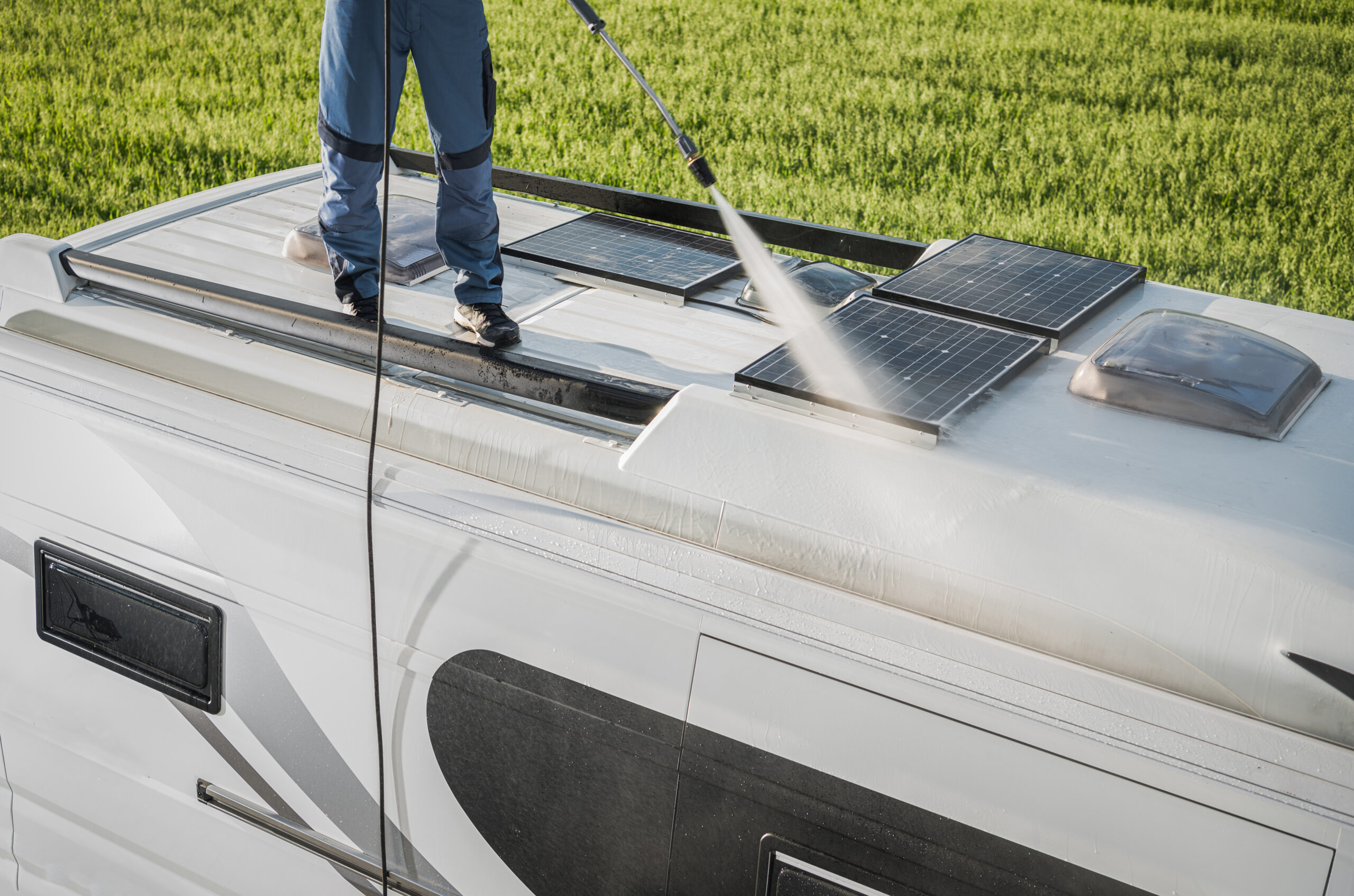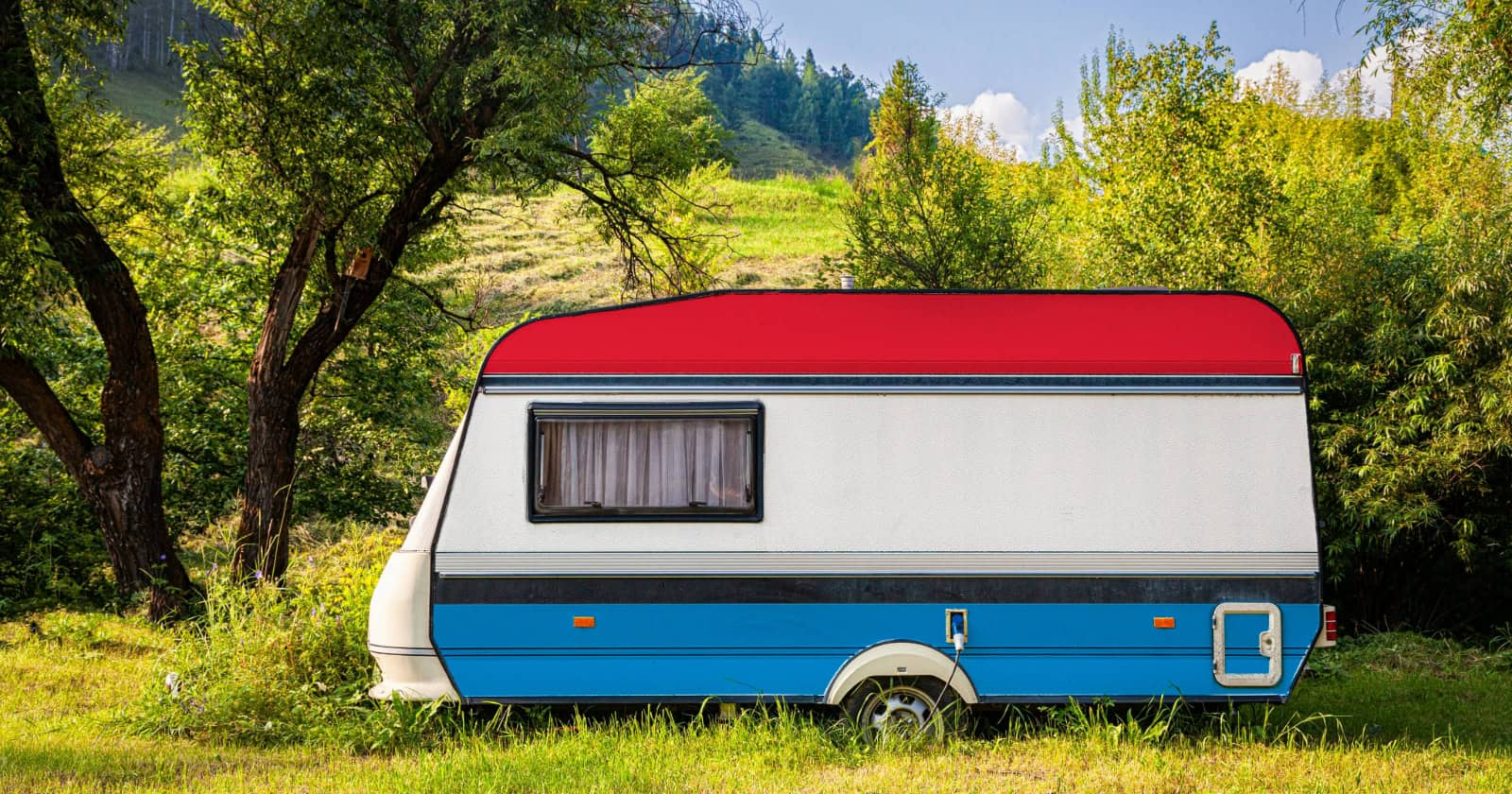
Should You Use An RV Pressure Washer?
Pressure washers are useful tools that enable us to use powerful jets of water to blast away tough stains, grime, dirt, and other debris. It’s a good idea to clean your RV frequently, but it can get exhausting to do it all by hand. This has led many people to wonder, “Do I need an RV pressure washer or will a regular one work?”
If you want to use a pressure washer on your RV, you should definitely only use models that are specifically made for RV use. These are more gentle, usually with a PSI rating of 1,100-1,300. Standard pressure washers can damage your RV exterior and possibly even punch holes through it!
If you already have a pressure washer at home, it might be tempting to power it up and use it on your dirty RV. This is a bad idea that could potentially cost you thousands of dollars to repair. Using an RV pressure washer is much safer, but there is still a right way to go about the cleaning process. We’ll discuss the steps below, as well as some dangers to avoid.
How to safely use an RV pressure washer
The first thing to remember when using a pressure washer on your RV is that it’s not a one-setting-fits-all kind of job! Each area of your RV will require a slightly different washing procedure in order to prevent any problems. The roof, windows, wheels, etc will all need to be treated differently in order to get the best result.
Keep the exterior material in mind as well! Fiberglass is more prone to damage compared to metal siding, especially if the fiberglass is old. If you use any kind of soap mixed in with the water, make sure it is a fairly mild detergent that isn’t caustic.
Once you have your RV pressure washer on hand, you’ll want to focus on the roof first. Dirt, leaves, pollen, bird poop, and other gunk accumulates on the roof and will drip down the sides. Because of this streakage risk, you need to wash the roof first.
Climb a ladder or climb onto the roof itself to clean it. Block off any rooftop vents and openings and be sure to avoid them as you clean. You don’t want any water or soap leaking into your air conditioner! Use a low-pressure nozzle and carefully work your way over the the entire roof.
Again, keep the pressure fairly low to avoid stripping away the protective sealant. Keep the nozzle at an angle so the pressure is weakened and has a chance to splash. Pointing a pressure washer directly at the surface can cause major problems!
Once the roof is clean, you can focus on the sides of the RV. You can use a high pressure nozzle for these areas, but still make sure you keep the stream between 1,100 and 1,300 PSI. Hold the nozzle at least 1 foot away from the surface and sweep it in horizontal movements from top to bottom. This practice will help you avoid pushing the dirt up and dealing with dirty streaks later.
As you clean the sides, be sure to avoid any caulking, decals, vents, or rubber pieces. If you do need to clean these parts, make sure you use the lowest pressure setting and keep the nozzle at an angle.
Windows should be washed by hand so that the caulking and seal are not damaged. You can use a low pressure spray to rinse them down as long as you do it from a distance.
Finally, when you need to clean the wheels, use low pressure again so you can avoid puncturing or weakening the tires. Wait until the RV is completely dried and then finish up with a fresh layer of wax (it’s ideal if you use a wax that contains UV blockers).
If you spot any areas that seem to be weakened, stripped, dented, or otherwise damaged after using an RV pressure washer, stop using it immediately! It might take more effort to clean an RV by hand, but it’s ultimately safer than using a pressurized jet of water.
Dangers of pressure washers
If you’re successfully used a pressure washer to clean your house siding, porch, sidewalks, or other items, you might be wondering why it’s so risky to use on RVs. Although RVs might seem sturdy, their siding is honestly quite thin. It’s prone to warping, denting, or even breaking if it’s put under too much pressure. This is because it doesn’t have as much structural support as a house.
If you have an RV with a fiberglass exterior, this is even more risky. While metal siding might bend, fiberglass is more brittle, so it can easily break. If you punch holes in your RV with a pressure washer, you now have to contend with an integrity issue as well as water damage.
Pressure washers can also cause cosmetic damage. It can strip away sealant and wax, damage your decals, and maybe even remove paint. These might not be major issues to fix, but your RV won’t look as nice and it might lose some value when it comes to reselling or trades.
There are also hot and cold pressure washers. They each have their own uses, but cold models are usually better for RV cleaning. You won’t cause any heat damage to the exterior, plus it will be safer for you to handle cold water compared to hot water.
All of these reasons point to one conclusion: It’s not a good idea to use standard pressure washers on your RV. Even low-powered models that are specifically made for RVs have some inherent risk, so it’s good to know how to use them properly. At the end of the day, it’s usually safer to just wash the vehicle by hand and use a garden hose to rinse it off.
Best pressure washers to use
If you really want to use a pressure washer to speed things up, there are several good models you can explore.
Some good RV pressure washer options include:
- Karcher K2 CCK
- Cam Spray Professional 1000 PSI (Electric – Cold Water) Pressure Washer
- Sun Joe SPX1000 1450 PSI Electric Pressure Washer
Again, the most important features to look out for are PSI ratings in the low-mid 1,000 range and a collection of high and low pressure nozzles you can switch between. A pressure washer can be a helpful tool for cleaning, you just need to use it carefully and remember that your RV exterior isn’t as sturdy as it might appear. If you’re in doubt, don’t use a pressure washer at all.
Make sure you keep track of all your RV maintenance and repairs with an online tool such as RV LIFE Maintenance. Not only can you keep all of your documents in one place, but you’ll also receive timely reminders when maintenance is due to help you avoid costly repairs and potentially serious accidents.
Related articles:



